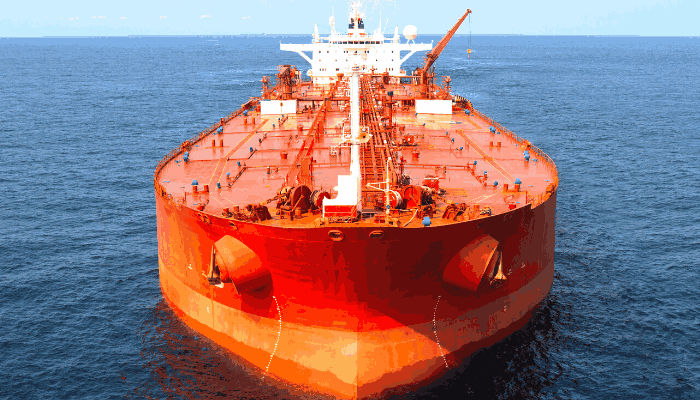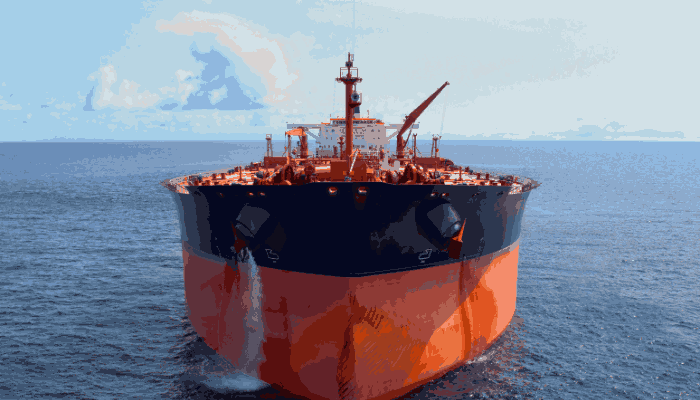5 Biggest Oil Tankers Which Are Now Scrapped
The shipping industry has grown manifold in the past few decades. As trade grew, big players commissioned the construction of bigger ships, especially oil tankers. Most of the biggest ships in the world are oil tankers. Moreover, in the past, one of the biggest ships in the world has been oil tankers. This article will look at the top five biggest oil tankers that are now scrapped.
The following mammoth-sized oil tankers were built between the mid and late 70s. Sadly, three of these five giant vessels could not serve even for a decade and were soon scrapped. The other two, however, served much longer but were also eventually scrapped.
Let’s have a look at the five largest oil tankers that were ever made.
1. Seawise Giant
With a length longer than the Empire State Building, Seawise Giant was the longest ship ever made. She was a ULCC or an Ultra Large Crude Carrier/ ULCC Supertanker. She operated on routes between the Middle East and the United States.
She had the greatest deadweight tonnage with a displacement of 657, 019 tonnes; a laden draft of 24.6 m (81 feet). Her deck space covered 31,541 sq m, and she had 46 tanks. Due to her mammoth size, she could not navigate the Suez Canal, Panama Canal, or the English Channel.
She was built in 1979 by Sumitomo Heavy Industries Ltd. at their Oppama shipyard in Yokosuka, Kanagawa, Japan, for a Greek owner. However, he could not buy it, and the vessel was sold to a Chinese Shipping Kingpin.

During the Iran-Iraq war, when Seawise Giant was transiting the Strait of Hormuz with Iranian Oil, she was hit by Iraqi air force missiles. The damage caused her to be declared a total loss and the world’s biggest shipwreck, eventually laid up in Brunei Bay.
The wreckage was bought by Norman International, who towed her to Singapore from the Persian Gulf and initiated repairs. She resumed services in October 1991 as Happy Giant.
Shortly after, she was bought by Jørgen Jahre and renamed Jahre Viking. She sailed with this name under the Norwegian Flag for the next 13 years. First, Olsen Tankers Pte. Ltd. purchased her in 2004 and was renamed, Knock Nevis. The refit took two years as she was converted into a permanently floating storage vessel (FSO) in the Qatar Al Shaheen oil field in the Persian Gulf, off the coast of Qatar.
Her new owners, Amber Development Corporation, sold her to Indian ship breakers. She was renamed Mont Fate for her final journey in December 2009. After clearing Indian customs, she sailed to Alang-Sosiya ship breaking yard, Gujarat, India, in January 2010. She was scrapped with the help of over 18,000 workers. Only her hull remains, exhibited in the Maritime Museum, Hong Kong.
The next four supertankers belonged to the Batillus class and were all built by Chantiers de l’Atlantique at Saint-Nazaire. They were the biggest ships in terms of gross tonnage that were ever constructed, having approximate 555,000 metric tons deadweight and were 414 metres in length.
2. Pierre Guillaumat
This Batillus class supertanker was built for Compagnie Nationale de Navigation. She was named after Pierre Guillaumat, the French politician and founder of the Elf Aquitaine oil industry.

The ship was brought into service in 1977 and was put on anchorage at Fujairah by early 1983. Her gigantic proportions didn’t allow her to pass through the Suez or Panama canals and her draft let her enter only a minimal number of ports in the world, causing her unprofitable for the company. In late 1983, she was renamed Ulsan Master by Hyundai Corporation and brought to Ulsan, South Korea, for demolition.
3. Batillus
This supertanker was built for Shell Oil in 1976. The condition of the international oil market did not improve between 1977 and 1980, and the number of voyages undertaken by the Batillus was considerably reduced to just four trips round the year, which were further reduced to 1 or 2 trips by 1982.

She made her last oil shipment in mid-1983, after which she was moored. Shell Oil decided to scrap her in 1985 for less than $8 million, and the Batillus made her last trip to Kaohsiung, Taiwan, where she was scrapped.
4. Bellamya
She was another Batillus class supertanker commissioned by Shell Oil. Work on the Bellamya was finished months after the Batillus, and she began her service in 1976.

In the following years, the condition of the international oil market did not improve. Like her sister’s vessels, she could not be employed at many places and was put out of service in 1984. She was eventually scrapped in 1986 at Ulsan, South Korea.
5. Prairial
The Prairial was the only Batillus class in service for more than a decade and rendered service for 24 long years before being scrapped. She was renamed Sea Brilliance in 1985, Hellas Fos in 1986 and Sea Giant in 1997. She is the third largest ship ever built, surpassed in size only by Seawise Giant and sister ship Pierre Guillaumat.

The Prairial was completed and commissioned in 1979 and laid up at Vestnes, Norway, by 1983. She was sold in 1985 and re-commissioned as Sea Brilliance. She was bought to the Gadani ship-breaking yard in Pakistan in 2003 and scrapped.
One cannot help but wonder at the amount of technical brilliance that must’ve gone into building these giants and the thousands of hours spent keeping them running safely. The Maersk E-class ships will be the longest container ships when launched and yet trail behind these giants with a length difference of almost 16.5 metres from the Prairial and a good 60.75 metres from the Seawise Giant.
Frequently Asked Questions
1. What is the biggest oil tanker ever built in the world?
In the history of ULCCs, Seawise Giant is the biggest tanker ever built. Sumitomo Heavy Industries Limited delivered her in 1979. When fully laden, she weighed 564,763 tonnes which is the heaviest deadweight tonnage of any ship that has sailed the high seas.
2. How many oil tankers are in the world?
As of 2020, there were around 810 Very Large Crude Carriers worldwide. Oil tankers are also called petroleum tankers. They are crucial for shipping oil from their extraction sites to refineries, distribution centres, or ports.
3. Who owns the most oil tankers?
Mitsui OSK Lines is one of the world’s biggest oil tanker companies. It operates a fleet of over 930 ships with a deadweight of around 66 million tonnes.
4. Do oil tankers return empty?
Usually, oil tankers, coal carriers and ore ships transport cargo from one direction to another, from the port of shipment to the port of discharge. They usually return empty. Hence the freight rate covers the costs of returning empty.
5. What are the disadvantages of oil tankers?
Crude oil tankers are constructed in 9 to 15 months and are expensive to build and maintain. Exports are pretty costly for the nation producing oil and then shipping it.
You might also like to read
- Panamax and Aframax Tankers: Oil Tankers with a Difference
- Understanding Crude Oil Washing Operation on Oil Tanker Ships
- 20 Hazards On Oil Tanker Ship Every Seafarer Must Know
- Worst Oil Spills: The ABT Summer Oil Spill Incident
- Understanding Design Of Oil Tanker Ships
Disclaimer: The author’s views expressed in this article do not necessarily reflect the views of Marine Insight. Data and charts, if used in the article, have been sourced from available information and have not been authenticated by any statutory authority. The author and Marine Insight do not claim it to be accurate nor accept any responsibility for the same. The views constitute only the opinions and do not constitute any guidelines or recommendations on any course of action to be followed by the reader.
The article or images cannot be reproduced, copied, shared, or used in any form without the permission of the author and Marine Insight.
Image Credits
wikimedia, blogspot, westnet, photobucket
Do you have info to share with us ? Suggest a correction
Subscribe To Our Newsletters
By subscribing, you agree to our Privacy Policy and may receive occasional deal communications; you can unsubscribe anytime.
Web Stories

About Author
Zahra is an alumna of Miranda House, University of Delhi. She is an avid writer, possessing immaculate research and editing skills. Author of several academic papers, she has also worked as a freelance writer, producing many technical, creative and marketing pieces. A true aesthete at heart, she loves books a little more than anything else.









Very interisting technical reports
I like technical reports
Seawise Giant, was built for Hong Kong owners Sir Y K Pao and not Greek.
@Ganapathy: The Greek shipping magnate who originally ordered it refused to take delivery by the time it was finished, and it was subsequently sold to the Chinese founder of Hong Kong Orient Overseas Container Line.
Lot talent and engineering and money just to be wasted. Its shameful
I may not be well versed on the economics of the oil trade but I’m versed enough on economics to know that junking a 6 or 7 year old ship IS bad economics.
The Batillus class supertankers were obviously built as a response to the OPEC oil embargoes of the early 1970s and then the flood of oil during the latter 70s clearly would render the Batillus class ships not financially feasible for use…… HOWEVER with the Iranian revolution in the late 70s and the Iran-Iraq war in the early 80s sent oil prices shooting up to the equivalent of over $200 a barrel WOULD seem to make the Batillus class tankers VERY reasible for hauling crude.
Also why didn’t the owners simply mothball the giant supertankers to wait for prices to recover? How costly is it to just moor a ship in a bay or harbor?